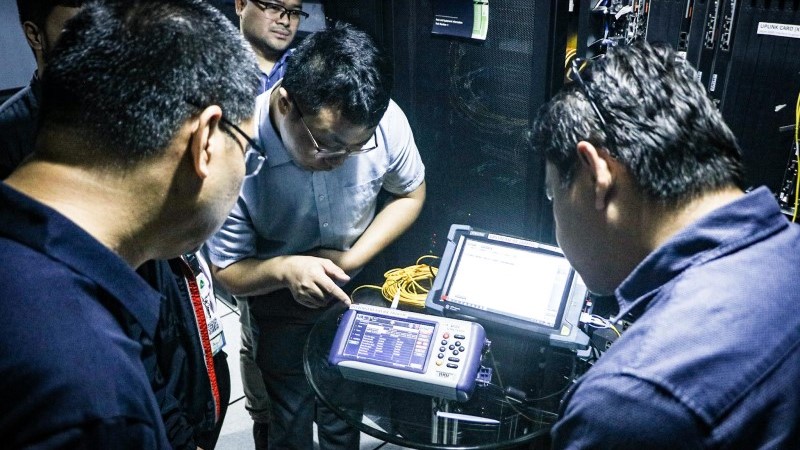PLDT first to trial 50G PON in the Philippines
PLDT has successfully tested 50G PON, the technology that powers the company's fiber-to-the-home (FTTH) service across the country.

PLDT is the first telecom carrier in the Philippines to successfully test 50G passive optical networks (50G PON), the technology that powers the company's fiber-to-the-home (FTTH) service across the country.
50G PON will enable PLDT to provide 50 Gbit/s speeds for every equipment port – several times faster than the speeds that current technologies GPON (2.5 Gbit/s) and XGS PON (10 Gbit/s) are able to deliver.
"After successfully testing XGS PON in 2021, we are testing the latest 50GPON, which will allow five times faster speeds than XGSPON and 20 times faster speeds than GPON, which is the most widely used technology by fiber providers in the Philippines," said Arvin Siena, vice president and head of network strategy and transformation office at PLDT and Smart.
As of end-September 2023, the PLDT Group has expanded its total fiber footprint to over 1.1 million cable kilometers, consisting of over 0.2 million cable kilometers of international fiber and about 0.9 million cable kilometers of domestic fiber.
According to PLDT, its network has reached more than 17.3 million homes in 69% of the country's municipalities/towns, while PLDT's total number of fiber ports rose to 6.15 million covering over 18,000 barangays nationwide. [Editor's note: A barangay is the smallest local government unit in the Philippines.]
"This latest milestone is a testament to the Group's commitment to always be ahead in harnessing the best technologies and innovations to deliver enhanced services and elevated customer experience to the Filipino public," said Eric Santiago, head of network at PLDT and Smart, in a statement.
"While we have been offering boosted speeds to our customers even before the pandemic, this new technology further ensures that we can provide the best and fastest service to homes nationwide," he added.
Network sites in Mindanao receive ISO certification
Meanwhile, PLDT and its wireless subsidiary Smart Communications announced that their critical network facilities in the southern Philippine island of Mindanao have received new international certifications for business continuity.
The newly certified facilities are located at Ponciano and Matina Shrine Hills in Davao City, while critical network sites in Bulua and J Pacana in Cagayan de Oro have also been re-certified.
"These certifications are a testament to PLDT and Smart's capability to continue delivering our essential services amid emergencies, disasters and climate-related risks," said Oliver Carlos Odulio, head of enterprise business continuity and resilience office at PLDT and Smart.
The PLDT Group now has a total of 22 ISO 22301:2019 certifications. The certification defines the requirements that business continuity management systems (BCMS) must meet to ensure an organization can continue operating during and after crisis situations, such as natural disasters, cyberattacks, pandemics, armed conflicts or any other event that may interrupt its activities.
"We are confident that whatever happens and wherever we are, there are plans already set, and we are confident that people are already in place to respond. The ISO certification process has helped establish teamwork among different units in the company," said Claro Landeta, head of Mindanao facilities management for PLDT.
Read more about:
AsiaAbout the Author(s)
You May Also Like




.jpg?width=300&auto=webp&quality=80&disable=upscale)







